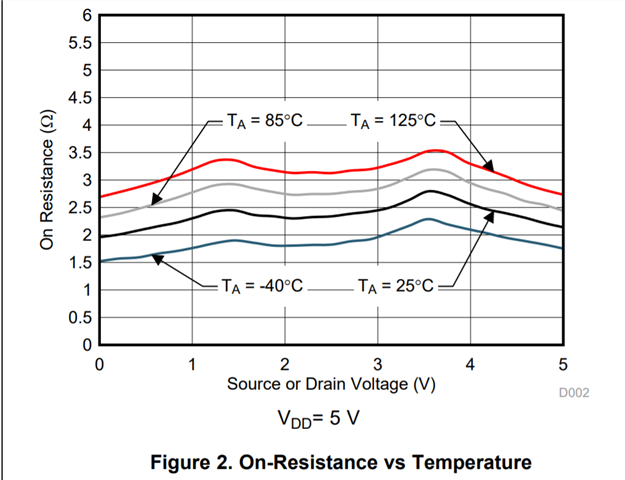Other Parts Discussed in Thread: TMUX1109
Hi Team
My customer is considering TMUX1108 for temperature control board application but has concerns regarding the resistance drift under the room temperature.
The actual operating temperature of the board occasionally drops to -20 degrees Celcius due to the TEC, while sometimes it rises to 20 degrees Celcius.
I checked the datasheet and found the temperature drift chart for high-temperature applications, but there's no specification regarding the temperature that's lower than 25 degrees Celcius.
Could you help provide some information in such regard?
Regards
David



